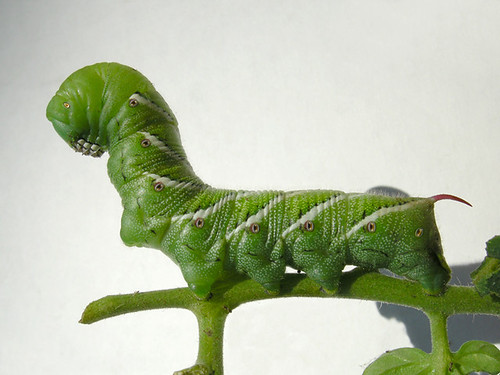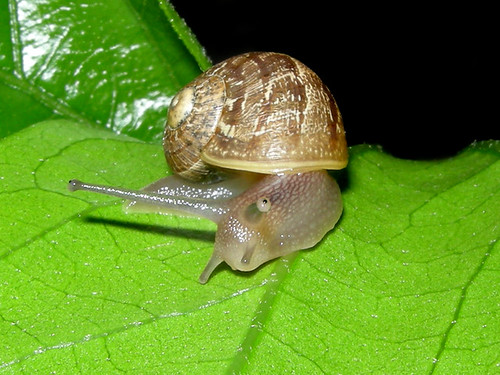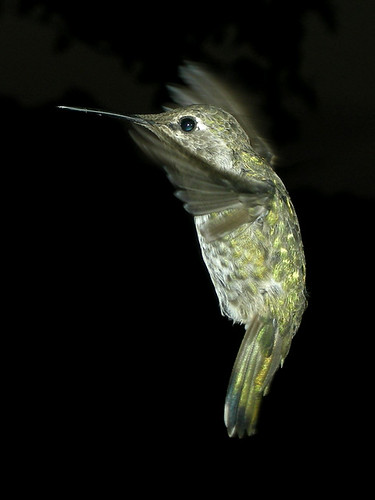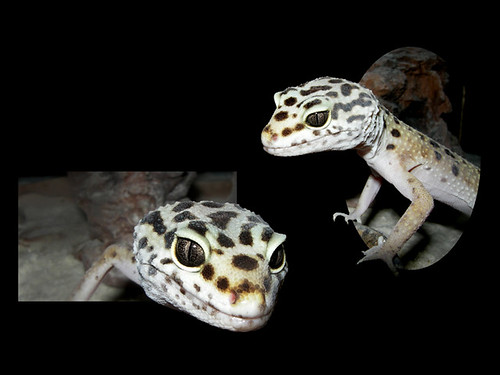Author's posts
Aug 29 2008
TROJAN HORSE

Well here is a larger version of the “port-holed header” from last night.
Although Olivia guessed correctly that the header image was a “form of caterpillar”, my friend Dave in Okinawa, guessed it as a “Tomato Worm” which I believe it is.
I`m going with that hunch, since I saw it on a tomato plant here, along with it`s partner, laying waste to dozens of tomatoes.
It is over 3″ long & very beautiful if you like green.
Hector Protector was dressed all in green,
Hector Protector was sent to the queen.
The queen did not like him,
no more did the king
so Hector Protector was sent home again.
Obviously some people don`t like green.
On Planet Earth, a beautiful large format Hibiscus. There are more beyond it.
The header shows that you can pick up the pieces of a broken heart, but you can`t put a flower back together.
Please do go see the character actors beyond the main post.
Their expressions are strange. I don`t know if you can tell, but there are two “Tomato Worms” (Olivia)
So Dave, tell me which one you want a print of.
As for Olivia, you get one also for being so “hot”. That`s what the judge ruled
http://frenchpirate.blogspot.com/
Aug 28 2008
We Have To Talk, Green
First, I believe some one has the opportunity to leave others green with envy.
The image in the header is a mystery image. I promise it is not manipulated, to change it, regarding color, shape, original form, number of “portholes” etc etc.
If anyone can guess what it is, I will send them a large format print of their choice, from the series this image is from, which I will post tomorrow. Good luck & stay green.
I`ve been a little slow to post lately, but I believe it`s because I caught something from tonight`s post subject.
I feel like crawling into my shell, & if I do, I`ll keep an eye out.
Don`t run with shears & be careful out there….please.
A clue: The header object is familiar. Everyone has seen one growing up. It`s an “ugly duckling”, but does not quack.
It has feet, but does not paddle. It can see where it goes, butt not where it`s from, even though it constantly “looks” back.
The header is at the top of the page at the link below. (if the above was confusing)
By clicking on the main post image, you can see more of this slow shoot.

http://frenchpirate.blogspot.com/
Aug 25 2008
LEADER OF THE BAND

For those of you who saw my test shots for this same vantage point, here are ones I shot tonight.
The usual links are unchanged, as I`ve been quite occupied of late.
Please bear with me, though.
I`ll be back to full capacity soon, I hope.
Meanwhile, stay balanced poised & smiling,.. please.
http://frenchpirate.blogspot.com/
Aug 22 2008
Welcome to the fun house
Honoring OTB`s request for a cross-posting of my “WHITE KNUCKLES” blog, I`m testing my limited geeko knowledge by posting these knowledgeable geckos.
The header, Planet Earth & the main post image are all linkable images.
Please feel free to browse through my archives there, for images taken from my day to day discoveries.
I better see if this works before getting into more details.

http://frenchpirate.blogspot.com/
Feb 22 2008
Bronze

Abused by a system that sent this young man into battle, he has devised his own manner in how to deal with fear. He hides it. Deep inside, he knows that if his fear shows, it may spread to other people, who, he is positive would all & forever point at him as the origin.?He must not show what tears at him so he now shows his petaled face, sure that everybody loves flowers. His mother told him so. Here behind the bushes on the edge of the park where he lives, he marvels at the people cheering loud explosions & worries for their safety, having seen the devastation these bombs, bursting in air, cause. He does not comprehend the celebration of independance that shines, reflected on his metal face, positive it could never warm his soul.?Young men like this will be seen more & more as the systematic abuse they have & are enduring starts to bloom . We, who would never use our brothers & sisters like this, are inevitably charged with taking their hand & reassuring them that some one cares. No amount of pills or programs or tests will ever help unless there`s a caring soul to help them along.?The thing that will be difficult will be to make sure these people are not pointed out as the originators of their troubles. There will be many. Please smile at them & be nice. Have a nice day, & count your blessings.?This image I shot at night when while fooling around with the resident skunk, I noticed the light on some statues. I had moved these statues a few days previously & had not yet seen them in the light from the porch. This light was a little behind the statues & a little higher. There were two lights on each side of the porch entry, one red & one green. [Don`t ask].?I went & got a tripod & camera& set up with the camera set at F2.8 & started with a 6 second exposure. I started fooling around with the set-up & went to get a few masks from my collection, & brought along a flashlight. I changed to a 2 second exposure & I would spray the shot with a quick bath of light with the flashlight. This is one of the images from that series. Another image from that series can be seen at this link. It`s called “DICHOTOMY”.
http://frenchpirate.blogspot.c…
Feb 08 2008
Doomsday Vault
Since reading about the seed vault a few years ago, & trying to learn more about it, a friend sent this link to me, which made me see a completely different situation.
I believe this is a very important article, & also note that this article in the footnotes, allows for reprinting or sharing as long as The title & body of the text are not changed.
“Doomsday Seed Vault” in the Arctic
Bill Gates, Rockefeller and the GMO giants know something we don’t
by F. William Engdahl
Global Research, December 4, 2007
Email this article to a friend
Print this article
One thing Microsoft founder Bill Gates can’t be accused of is sloth. He was already programming at 14, founded Microsoft at age 20 while still a student at Harvard. By 1995 he had been listed by Forbes as the world’s richest man from being the largest shareholder in his Microsoft, a company which his relentless drive built into a de facto monopoly in software systems for personal computers.
In 2006 when most people in such a situation might think of retiring to a quiet Pacific island, Bill Gates decided to devote his energies to his Bill and Melinda Gates Foundation, the world’s largest ‘transparent’ private foundation as it says, with a whopping $34.6 billion endowment and a legal necessity to spend $1.5 billion a year on charitable projects around the world to maintain its tax free charitable status. A gift from friend and business associate, mega-investor Warren Buffett in 2006, of some $30 billion worth of shares in Buffet’s Berkshire Hathaway put the Gates’ foundation into the league where it spends almost the amount of the entire annual budget of the United Nations’ World Health Organization.
So when Bill Gates decides through the Gates Foundation to invest some $30 million of their hard earned money in a project, it is worth looking at.
No project is more interesting at the moment than a curious project in one of the world’s most remote spots, Svalbard. Bill Gates is investing millions in a seed bank on the Barents Sea near the Arctic Ocean, some 1,100 kilometers from the North Pole. Svalbard is a barren piece of rock claimed by Norway and ceded in 1925 by international treaty (see map).
On this God-forsaken island Bill Gates is investing tens of his millions along with the Rockefeller Foundation, Monsanto Corporation, Syngenta Foundation and the Government of Norway, among others, in what is called the ‘doomsday seed bank.’ Officially the project is named the Svalbard Global Seed Vault on the Norwegian island of Spitsbergen, part of the Svalbard island group.
Doomsday Seed Vault
The seed bank is being built inside a mountain on Spitsbergen Island near the small village of Longyearbyen. It’s almost ready for ‘business’ according to their releases. The bank will have dual blast-proof doors with motion sensors, two airlocks, and walls of steel-reinforced concrete one meter thick. It will contain up to three million different varieties of seeds from the entire world, ‘so that crop diversity can be conserved for the future,’ according to the Norwegian government. Seeds will be specially wrapped to exclude moisture. There will be no full-time staff, but the vault’s relative inaccessibility will facilitate monitoring any possible human activity.
Did we miss something here? Their press release stated, ‘so that crop diversity can be conserved for the future.’ What future do the seed bank’s sponsors foresee, that would threaten the global availability of current seeds, almost all of which are already well protected in designated seed banks around the world?
Anytime Bill Gates, the Rockefeller Foundation, Monsanto and Syngenta get together on a common project, it’s worth digging a bit deeper behind the rocks on Spitsbergen. When we do we find some fascinating things.
The first notable point is who is sponsoring the doomsday seed vault. Here joining the Norwegians are, as noted, the Bill & Melinda Gates Foundation; the US agribusiness giant DuPont/Pioneer Hi-Bred, one of the world’s largest owners of patented genetically-modified (GMO) plant seeds and related agrichemicals; Syngenta, the Swiss-based major GMO seed and agrichemicals company through its Syngenta Foundation; the Rockefeller Foundation, the private group who created the “gene revolution with over $100 million of seed money since the 1970’s; CGIAR, the global network created by the Rockefeller Foundation to promote its ideal of genetic purity through agriculture change.
CGIAR and ‘The Project’
As I detailled in the book, Seeds of Destruction, in 1960 the Rockefeller Foundation, John D. Rockefeller III’s Agriculture Development Council and the Ford Foundation joined forces to create the International Rice Research Institute (IRRI) in Los Baños, the Philippines.1 By 1971, the Rockefeller Foundation’s IRRI, along with their Mexico-based International Maize and Wheat Improvement Center and two other Rockefeller and Ford Foundation-created international research centers, the IITA for tropical agriculture, Nigeria, and IRRI for rice, Philippines, combined to form a global Consultative Group on International Agriculture Research (CGIAR).
CGIAR was shaped at a series of private conferences held at the Rockefeller Foundation’s conference center in Bellagio, Italy. Key participants at the Bellagio talks were the Rockefeller Foundation’s George Harrar, Ford Foundation’s Forrest Hill, Robert McNamara of the World Bank and Maurice Strong, the Rockefeller family’s international environmental organizer, who, as a Rockefeller Foundation Trustee, organized the UN Earth Summit in Stockholm in 1972. It was part of the foundation’s decades long focus to turn science to the service of eugenics, a hideous version of racial purity, what has been called The Project.
To ensure maximum impact, CGIAR drew in the United Nations’ Food and Agriculture Organization, the UN Development Program and the World Bank. Thus, through a carefully-planned leverage of its initial funds, the Rockefeller Foundation by the beginning of the 1970’s was in a position to shape global agriculture policy. And shape it did.
Financed by generous Rockefeller and Ford Foundation study grants, CGIAR saw to it that leading Third World agriculture scientists and agronomists were brought to the US to ‘master’ the concepts of modern agribusiness production, in order to carry it back to their homeland. In the process they created an invaluable network of influence for US agribusiness promotion in those countries, most especially promotion of the GMO ‘Gene Revolution’ in developing countries, all in the name of science and efficient, free market agriculture.
Genetically engineering a master race?
Now the Svalbard Seed Bank begins to become interesting. But it gets better. ‘The Project’ I referred to is the project of the Rockefeller Foundation and powerful financial interests since the 1920’s to use eugenics, later renamed genetics, to justify creation of a genetically-engineered Master Race. Hitler and the Nazis called it the Ayran Master Race.
The eugenics of Hitler were financed to a major extent by the same Rockefeller Foundation which today is building a doomsday seed vault to preserve samples of every seed on our planet. Now this is getting really intriguing. The same Rockefeller Foundation created the pseudo-science discipline of molecular biology in their relentless pursuit of reducing human life down to the ‘defining gene sequence’ which, they hoped, could then be modified in order to change human traits at will. Hitler’s eugenics scientists, many of whom were quietly brought to the United States after the War to continue their biological eugenics research, laid much of the groundwork of genetic engineering of various life forms, much of it supported openly until well into the Third Reich by Rockefeller Foundation generous grants.2
The same Rockefeller Foundation created the so-called Green Revolution, out of a trip to Mexico in 1946 by Nelson Rockefeller and former New Deal Secretary of Agriculture and founder of the Pioneer Hi-Bred Seed Company, Henry Wallace.
The Green Revolution purported to solve the world hunger problem to a major degree in Mexico, India and other select countries where Rockefeller worked. Rockefeller Foundation agronomist, Norman Borlaug, won a Nobel Peace Prize for his work, hardly something to boast about with the likes of Henry Kissinger sharing the same.
In reality, as it years later emerged, the Green Revolution was a brilliant Rockefeller family scheme to develop a globalized agribusiness which they then could monopolize just as they had done in the world oil industry beginning a half century before. As Henry Kissinger declared in the 1970’s, ‘If you control the oil you control the country; if you control food, you control the population.’
Agribusiness and the Rockefeller Green Revolution went hand-in-hand. They were part of a grand strategy which included Rockefeller Foundation financing of research for the development of genetic engineering of plants and animals a few years later.
John H. Davis had been Assistant Agriculture Secretary under President Dwight Eisenhower in the early 1950’s. He left Washington in 1955 and went to the Harvard Graduate School of Business, an unusual place for an agriculture expert in those days. He had a clear strategy. In 1956, Davis wrote an article in the Harvard Business Review in which he declared that “the only way to solve the so-called farm problem once and for all, and avoid cumbersome government programs, is to progress from agriculture to agribusiness.” He knew precisely what he had in mind, though few others had a clue back then— a revolution in agriculture production that would concentrate control of the food chain in corporate multinational hands, away from the traditional family farmer.3
A crucial aspect driving the interest of the Rockefeller Foundation and US agribusiness companies was the fact that the Green Revolution was based on proliferation of new hybrid seeds in developing markets. One vital aspect of hybrid seeds was their lack of reproductive capacity. Hybrids had a built in protection against multiplication. Unlike normal open pollinated species whose seed gave yields similar to its parents, the yield of the seed borne by hybrid plants was significantly lower than that of the first generation.
That declining yield characteristic of hybrids meant farmers must normally buy seed every year in order to obtain high yields. Moreover, the lower yield of the second generation eliminated the trade in seed that was often done by seed producers without the breeder’s authorization. It prevented the redistribution of the commercial crop seed by middlemen. If the large multinational seed
companies were able to control the parental seed lines in house, no competitor or farmer would be able to produce the hybrid. The global concentration of hybrid seed patents into a handful of giant seed companies, led by DuPont’s Pioneer Hi-Bred and Monsanto’s Dekalb laid the ground for the later GMO seed revolution.4
In effect, the introduction of modern American agricultural technology, chemical fertilizers and commercial hybrid seeds all made local farmers in developing countries, particularly the larger more established ones, dependent on foreign, mostly US agribusiness and petro-chemical company inputs. It was a first step in what was to be a decades-long, carefully planned process.
Under the Green Revolution Agribusiness was making major inroads into markets which were previously of limited access to US exporters. The trend was later dubbed “market-oriented agriculture.” In reality it was agribusiness-controlled agriculture.
Through the Green Revolution, the Rockefeller Foundation and later Ford Foundation worked hand-in-hand shaping and supporting the foreign policy goals of the United States Agency for International Development (USAID) and of the CIA.
One major effect of the Green Revolution was to depopulate the countryside of peasants who were forced to flee into shantytown slums around the cities in desperate search for work. That was no accident; it was part of the plan to create cheap labor pools for forthcoming US multinational manufactures, the ‘globalization’ of recent years.
When the self-promotion around the Green Revolution died down, the results were quite different from what had been promised. Problems had arisen from indiscriminate use of the new chemical pesticides, often with serious health consequences. The mono-culture cultivation of new hybrid seed varieties decreased soil fertility and yields over time. The first results were impressive: double or even triple yields for some crops such as wheat and later corn in Mexico. That soon faded.
The Green Revolution was typically accompanied by large irrigation projects which often included World Bank loans to construct huge new dams, and flood previously settled areas and fertile farmland in the process. Also, super-wheat produced greater yields by saturating the soil with huge amounts of fertilizer per acre, the fertilizer being the product of nitrates and petroleum, commodities controlled by the Rockefeller-dominated Seven Sisters major oil companies.
Huge quantities of herbicides and pesticides were also used, creating additional markets for the oil and chemical giants. As one analyst put it, in effect, the Green Revolution was merely a chemical revolution. At no point could developing nations pay for the huge amounts of chemical fertilizers and pesticides. They would get the credit courtesy of the World Bank and special loans by Chase Bank and other large New York banks, backed by US Government guarantees.
Applied in a large number of developing countries, those loans went mostly to the large landowners. For the smaller peasants the situation worked differently. Small peasant farmers could not afford the chemical and other modern inputs and had to borrow money.
Initially various government programs tried to provide some loans to farmers so that they could purchase seeds and fertilizers. Farmers who could not participate in this kind of program had to borrow from the private sector. Because of the exorbitant interest rates for informal loans, many small farmers did not even get the benefits of the initial higher yields. After harvest, they had to sell most if not all of their produce to pay off loans and interest. They became dependent on money-lenders and traders and often lost their land. Even with soft loans from government agencies, growing subsistence crops gave way to the production of cash crops.5
Since decades the same interests including the Rockefeller Foundation which backed the initial Green Revolution, have worked to promote a second ‘Gene Revolution’ as Rockefeller Foundation President Gordon Conway termed it several years ago, the spread of industrial agriculture and commercial inputs including GMO patented seeds.
